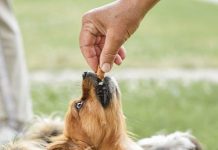Welcoming a new puppy into your home is an exciting adventure filled with wagging tails and playful antics. As you nurture this furry bundle of joy, ensuring their well-being becomes a top priority. One essential aspect of puppy care is their diet, which lays the foundation for a healthy and happy life. Transitioning your puppy to new food is a crucial step that requires careful consideration and gentle guidance. In this article, we’ll explore the right way to introduce your puppy to a new diet, ensuring a smooth and stress-free transition. With a little patience and the right approach, you can help your puppy develop healthy eating habits that will last a lifetime. Let’s embark on this journey together, fostering a loving environment where your puppy can thrive.
Understanding Your Puppys Nutritional Needs
When it comes to feeding your new furry friend, understanding what they need nutritionally is crucial for their growth and overall well-being. Puppies require a diet rich in protein, fats, and essential vitamins and minerals to support their rapid development. It’s important to choose a high-quality puppy food that is specifically formulated to meet these needs. Look for foods that list meat as the first ingredient and avoid those with fillers like corn or soy.
- Protein: Essential for building strong muscles and tissues. Look for a food with at least 22-30% protein.
- Fats: Provide energy and help with brain development. A fat content of 10-25% is ideal.
- Calcium and Phosphorus: Critical for bone growth. Ensure the food has balanced levels of these minerals.
As you transition your puppy to new food, do it gradually over a period of 7-10 days to prevent digestive upset. Start by mixing a small amount of the new food with their current food, gradually increasing the new food’s proportion while decreasing the old food. Monitor your puppy’s reaction to the new diet closely; look for signs of allergies or digestive issues, such as itching or diarrhea. Adjust the transition speed as needed, and consult your veterinarian if you have concerns.

Gradual Transition Techniques for Sensitive Stomachs
Transitioning your puppy to a new food can be a delicate process, especially if they have a sensitive stomach. To ensure a smooth changeover, it’s essential to adopt a gradual approach. Start by mixing a small amount of the new food with their current food. Over the course of 7-10 days, slowly increase the proportion of new food while decreasing the old. This gentle shift allows your puppy’s digestive system to adjust without overwhelming it.
Throughout this process, monitor your puppy for any signs of digestive upset, such as vomiting, diarrhea, or decreased appetite. If any of these occur, it might be necessary to slow down the transition or consult with your veterinarian. Always ensure that fresh water is available, as hydration plays a crucial role in digestion.
- Days 1-3: Mix 25% new food with 75% current food.
- Days 4-6: Mix 50% new food with 50% current food.
- Days 7-9: Mix 75% new food with 25% current food.
- Day 10: Transition to 100% new food.
By following these steps, you can help ensure your puppy’s dietary transition is as smooth as possible, paving the way for a happy and healthy life.

Monitoring Your Puppys Reaction to New Food
When introducing your puppy to a new diet, it’s essential to keep a close eye on their reaction to ensure a smooth transition. Puppies, much like humans, can have varying responses to dietary changes, and being observant can help you address any potential issues early on. Here are some tips to help you monitor your puppy’s adjustment effectively:
- Watch for Digestive Changes: Pay attention to your puppy’s stool consistency and frequency. A bit of loose stool can be normal during a transition, but prolonged diarrhea or constipation is a sign to slow down the process.
- Observe Energy Levels: Your puppy should maintain their usual energy and playfulness. A decrease in energy could indicate that the new food isn’t sitting well with them.
- Check for Allergic Reactions: Look out for signs of allergies such as excessive itching, skin rashes, or ear infections. These can indicate a sensitivity to an ingredient in the new food.
To make the monitoring process easier, consider keeping a journal to track any changes in your puppy’s behavior, appetite, and physical condition. This documentation can be invaluable if you need to consult with a veterinarian, providing a clear picture of your puppy’s health journey through the transition. Always remember, patience and attentiveness are key during this period of dietary adjustment.
















